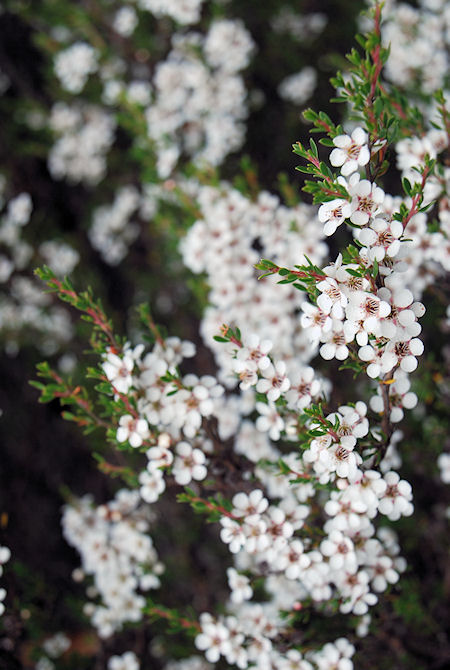Stopover in the cradle
|
home
Victoria Tasmania Go west Cradle Mountain NP Cuddle the devil The enchanted myrtles At the Blue tier Holy cow! Golconda Festival Second day Narawndapu NP Wineglass Bay Fishers Point The Big Gum Hartz NP Hobart Wooden Boat Centenary party Last day General Marsupials Birds More animals Trees |
 
If one really wants to see big parts of the park, one should do the long distance hiking track. That is really a great thing to do, but for this time, it was not on our list. We had a short stroll around and felt we might return, but later we changed our minds. But as a matter of fact, this is a place to see a really compressed picture of Tasmanian wildlife. Even though a part of this wildlife may be planted and the other one attracted in some way - still, it's here and it's in the wild. To me the most remarkable part of Tasmanian wilderness is the aboundance and size of lichens, mosses and ferns. They grow up to a size I haven't seen before, they develope shapes and colours as if in a fairy tale. I could have spent ages only gazing at them. 

Two very Tasmanian fellows: The Celery-top pine that can be found pretty much everywhere here, is in fact a conifer and therefore should have acicular, needle-like leaves. But it plays tricks with us: the tree has no leaves of what ever shape at all. At one stage in the past, leaves were a bad idea, maybe due to draught. The plant needed something more solid with less evaporation. So the young twigs went green and flat to take over the function. All you see is twigs, no leaves. 
One of the local Tea trees of Tasmania is Leptospermum rupestre. We found it on many places, never in a thick way, always charming, flowering and decorative.
The plant with the red bell-shaped flowers is a Tasmanian Christmas bell. It may have lost it's calendar flowering in February. Christmas bells also make decorative garden plants when provided with suitable conditions.   This little Echidna came along the NP centre main road. It appeared absolutely careless - very different from the shy specimen I came across in Victoria. Still, it was quick and busy, not much time for photographs.  Not rare, but really cute: Tasmanian pademelons. They went for their breakfast in early afternoon and did not care at all for visitors trying to get the best possible picture of them. They remained absolutely relaxed as if humans simply weren't there. One might suspect they are paid by the National Park to pose for the visitors.  The proof! A Bennetts wallaby only minutes after 5 p.m. going home from work. Who, if not staff members, would go here? |
marsupials - birds - more animals - trees - hotels - more links - email
by IKO

